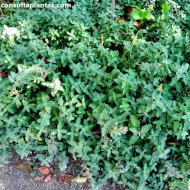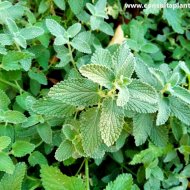Care of the plant Nepeta x faassenii or Faassen's catnip |
|
The genus Nepeta, family Lamiaceae, includes about 250 species of herbaceous plants native to Europe, Asia, and Africa. Some species and hybrids are: Nepeta × faassenii, Nepeta tuberosa, Nepeta cataria, Nepeta grandiflora, Nepeta teydea, Nepeta curviflora, Nepeta nepetella. Common names: Faassen's catnip, Catmint. It is a hybrid between the species Nepeta nepetella and Nepeta racemosa. They are herbaceous perennial and aromatic plants with a prostrate habit that do not usually exceed 50 cm (19.68") in height. The narrow leaves are silvery gray in color and smell minty. The lilac flowers appear in spikes. They bloom in spring and summer. Faassen's catnip is used in rockeries, to cover dry and sunny slopes, in borders and borders and in pots for patios and terraces. It combines with Salvia, Artemisia, Lavender, Stachys, Calamagrostis. This species does not attract cats like the Nepeta cataria. Nepeta x faassenii prefers full sun exposure but also grows in semi-shade. Frost resistant to -10 ºC (14 ºF). The soil can be normal well-drained garden soil with coarse sand, but Faassen's catnip will also grow in poor, sandy, stony soil. The transplant is done in early spring. Faassen's catnip resists drought well; water moderately waiting for the substrate to dry. Nepeta x faassenii does not need fertilizer. Prune wilted inflorescences. In early spring it appreciates a light pruning to strengthen the plant. Faassen's catnip is a plant resistant to the usual pests and diseases but sensitive to the accumulation of water in the roots. Nepeta x faassenii is propagated from seeds sown in spring and by division. It is convenient to renew the plants every 3-4 years. |
Images of the plant Nepeta x faassenii or Faassen's catnip |
Find plants
Nepeta x faassenii or Faassen's catnip | Care and Growing
© 2025 FavThemes


